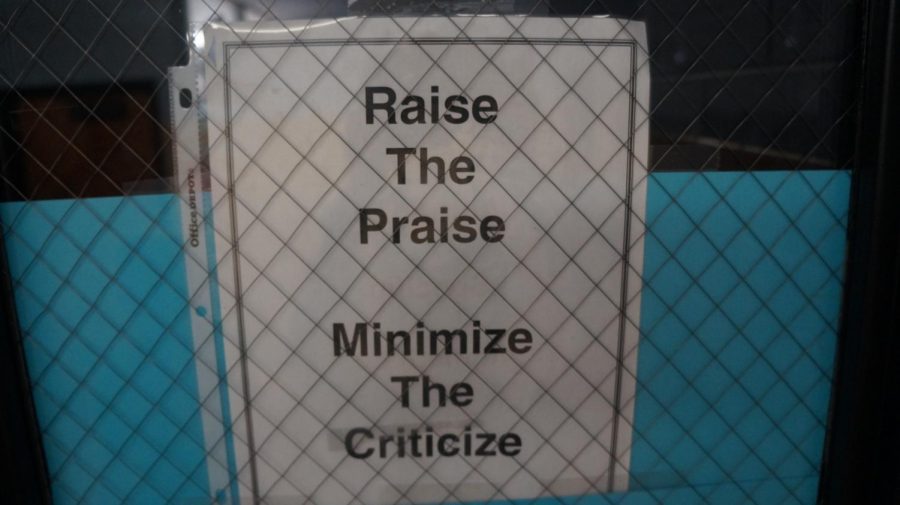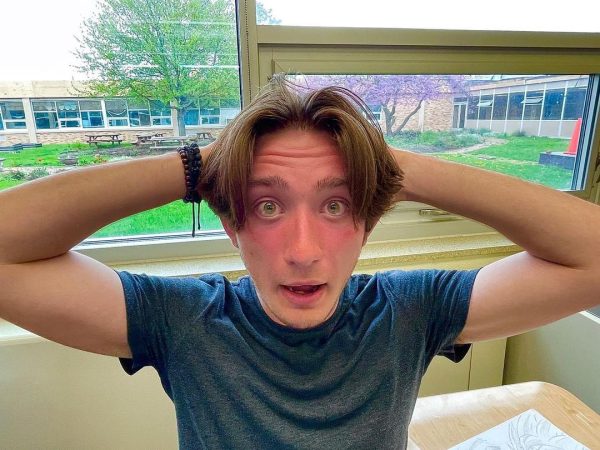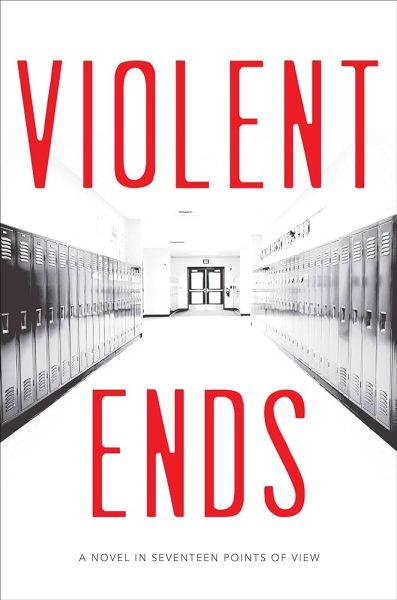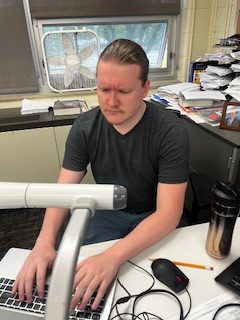Student fights surge in schools across nation
A sign outside of the SILE room encourages positive reinforcement to students.
Student tensions and altercations in schools are on the rise across the country, and by a considerable amount. In some school districts, the percentage of fights is up 21%, according to Chalkbeat.
“You have to figure out why young people are so mad at each other,” said Mr. Dale Martinetti, Social Intervention Learning Environment (SILE) teacher.
Students spend a day or multiple days in the SILE room as a result of discipline referrals. Students involved in fights are typically suspended out-of-school; upon returning, they spend at least one day in SILE, where they carry out their schoolwork in a separate environment.
“Why are students fighting?” Mr. Martinetti continued. “I think they’re searching for coping skills, and they think that’s the only way to resolve things.”
There are many reasons why more students are fighting at school. Like with most current issues involving mental health, the main cause is COVID-19 and the online schooling that occurred as a result of it.
“So I think that’s part of it: the COVID piece,” said Mr. Marinetti. “Students haven’t been around each other for a while, and I think that’s a big part of it.”
Months of separation, and only seeing other students through computer screens, has stunted not only educational learning, but social and emotional learning as well. Students have not had the opportunity to interact with other students for the past year and a half. This is the first year of high school for not only the freshmen but also for most of the sophomores who had their freshman year in online classes. Even juniors missed almost half of their freshman year.
“We have two groups of freshmen,” said Mr. Martinetti. “The sophomores are really freshmen because they haven’t been in school too long. There aren’t as many juniors and seniors in SILE. I think most of the issues we have are with the lower grades because they’re trying to figure things out.”
Missing in-person social development has led many students to social media.
“I think social media is a huge problem, a massive problem,” said Principal Ronald “Gus” Carter. “I truly think it’s one of the worst things that teenagers could get involved in. It’s a problem because kids are connected to each other all the time, and you have to shut it down at some point. We also listen to other people’s opinions way too much. That’s where a lot of our physical altercations stem from.”
In years previous, fights stemmed from in-school arguments. But now with the rise of social media, and the decrease of in-person interaction, fights are originating outside of school and bleeding into the classrooms and cafeterias.
“I would say a good rule of thumb is that when we deal with a student situation, it’s very likely that it will point to something outside of school, that then continues to fester here in the building,” said Mr. Carter.
Students lost their connections to school, and many feel more disconnected from administrators and teachers than ever before.
“Kids have a lot going on at home, it’s not just that they come to school,” said an anonymous student who was involved in a fight. “Everybody has different things going on. Some kids feel like they can’t trust adults at school because they might get in trouble at home, because if a kid says something that may put them in danger, the adults are required to report it. Some kids are afraid of their parents. Everyone has different things. This needs to get addressed, this is getting out of hand.”
This has left many students feeling like they are backed into a corner. In order to move past the violence, schools need to find a way to help students adapt to changing times in a healthy and productive way.
“School’s about learning things, but it’s also socializing, and figuring out ways to deal with people that they have issues with,” said Mr. Martinetti. “It’s all a learning process. I think that whatever we can do to help speed up that learning process, would be a big piece to helping things change.”

Hi! I’m Maren, and I’m the Head Editor and the News Editor of the Voyager. I’ve been with the Voyager for almost 4 years now, and I love being able...

Howdy! I’m Chase Hunter :) and I am one of the copy editors for the Voyager. I am a Junior at Guilford, and this is my first year in Newspaper....











